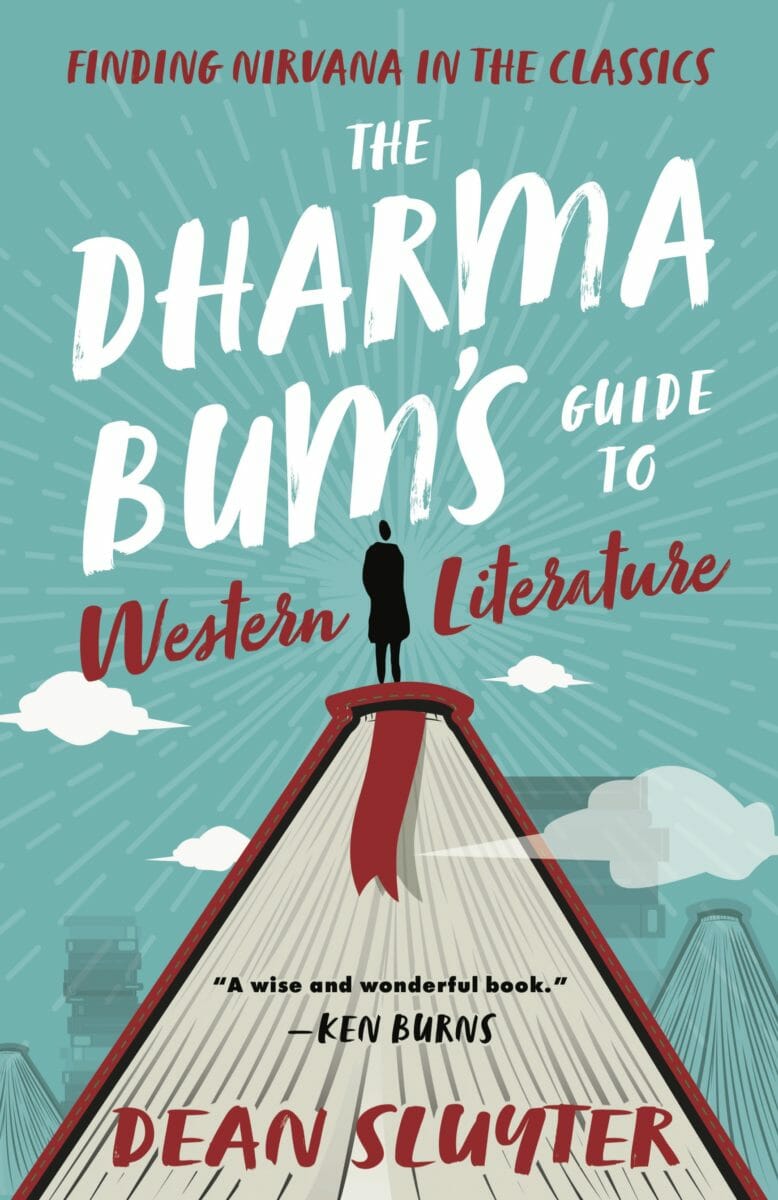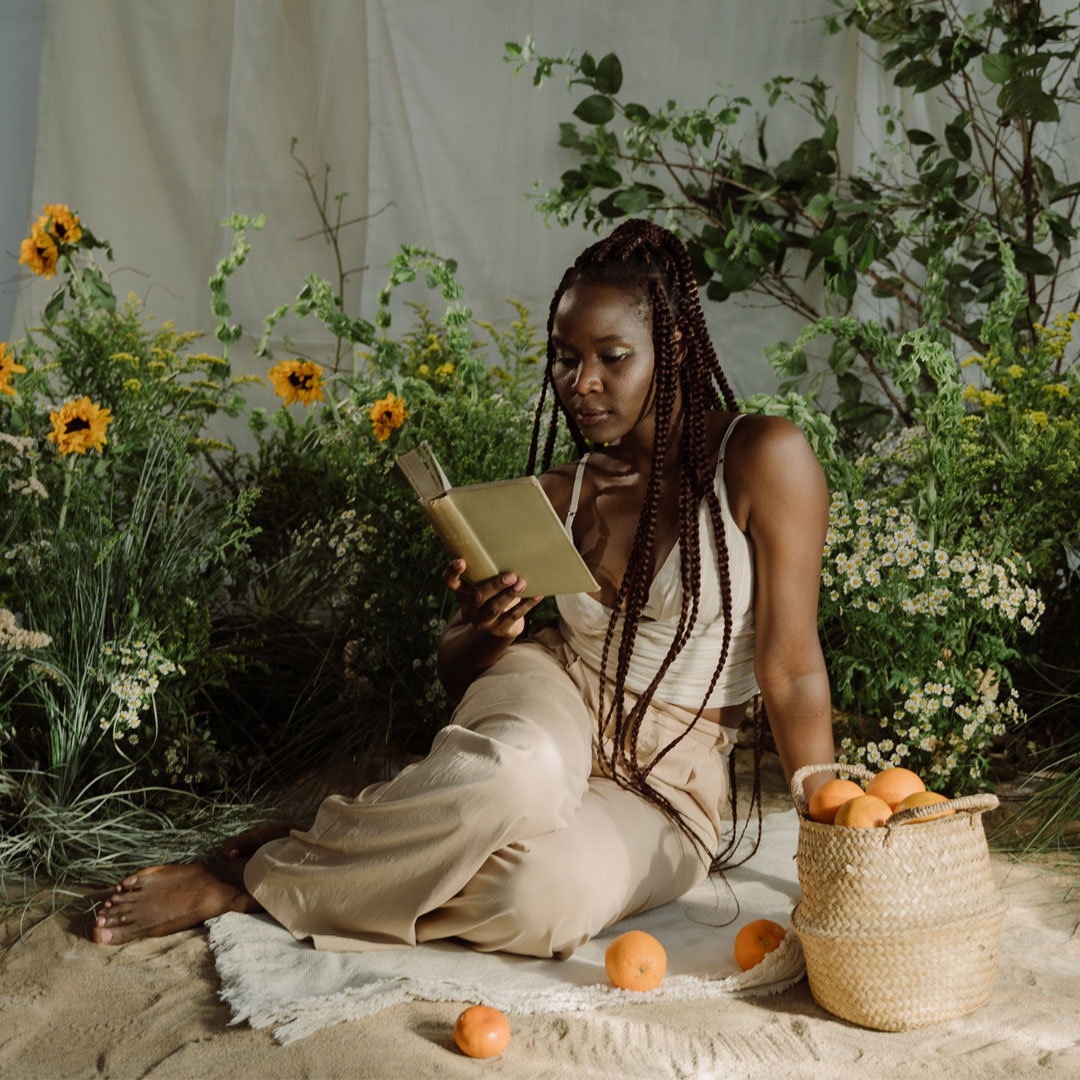The Dharma Bum’s Guide to Western Literature: Finding Nirvana in the Classics by Dean Sluyter
I love diving deep into great literature. I love receiving spiritual wisdom through the written word. Not very often do I get to do both with the same book. Then again, I’m not Dean Sluyter, whose mind is a divining rod for messages that most of us fail to discern. He did it for movies in Cinema Nirvana, and now he’s done it for selected works in the Western literary canon. In The Dharma Bum’s Guide to Western Literature: Finding Nirvana in the Classics, he sees enlightenment wherever he looks. It’s a perfect topic for a long-time meditation teacher, pop culture aficionado, and former English instructor at a top East Coast prep school, and he approaches the task with expertise, engaging prose, and a joyful relish.
You will no doubt be familiar with at least some of the authors in The Dharma Bum’s Guide. As Sluyter puts it, he explores “the books that we read, or were supposed to read, in high school or college.” And you will not be surprised to find luminaries like William Blake, Ralph Waldo Emerson, and Emily Dickinson in a “spiritual” book, although you will be surprised by much of what Sluyter finds in their works. What’s especially Sluyteresque is the not-so-obvious choices. Just as he uncovered nuggets of illumination in movies like The Godfather and Jaws, he digs them out of classics like Moby Dick, Macbeth, Waiting for Godot, and the slave narrative of Frederick Douglass.
Really? Well, yes, because as Sluyter suggests, if the infinite is really infinite, it must be everywhere, even in the seemingly dark places, and even in authors who might not have admitted to having a spiritual bone in their bodies. He uses Douglass’s story, for example, to explore the nature of dukkha and moksha, suffering and liberation, whether physical or spiritual. Moby Dick turns out to contain not only gory scenes of whale hunting but sublime glimpses of the transcendent. There are lessons on conscious dying in one of John Donne’s love poems. Who knew?
Like all successful classroom teachers, Sluyter specializes in making his material both clear and entertaining. As he says in his introduction, “If it’s not fun, what’s the point?” So, along with the heavier tomes, he takes a jaunt through The Cat in the Hat, finds awakening messages in Rodgers & Hammerstein’s Oklahoma!, draws lines of connection from rap and Zen to Chaucer and Toni Morrison, and nominates alternative national anthems from Mr. Rogers and Aretha Franklin. Literature was never this much fun, or this enriching for the soul.

The beating heart of The Dharma Bum’s Guide is the revelation that all those books on the English 101 syllabus can be Dharma gates, portals to awakening. Sluyter’s enthusiasm is contagious as he shows how to read Hemingway as haiku, or derive mindfulness lessons from Virginia Woolf, or see the parallels between Huck Finn’s journey and the Buddha’s, or find the solution to Gatsby’s problems in St. Paul’s teachings on love. And he finds hints to meditation — with an emphasis on naturalness and effortlessness — everywhere: Whitman’s “I loaf and invite my soul.” Dickinson’s “Not knowing when the dawn will come / I open every door.” Keats’s “Still, still,” Huck and Jim literally going with the flow as the river carries their raft downstream.
Digging deep in that way takes a certain kind of creativity and boldness. Those Sluyter has, along with a sparkling writing style of his own. You’ll be entertained; you’ll be elevated; you’ll be enlightened—more enlightened than you were before, at least—and if you learn from the author’s method, you’ll never again view great works of art in quite the same way.
Philip Goldberg has been studying the world’s spiritual traditions for more than 50 years, as a practitioner, teacher, and author. An Interfaith Minister, public speaker, and workshop leader, his numerous books include Roadsigns on the Spiritual Path; American Veda: From Emerson and the Beatles to Yoga and Meditation, How Indian Spirituality Changed the West; The Life of Yogananda: The Story of the Yogi Who Became the First Modern Guru, and his latest, Spiritual Practice for Crazy Times: Powerful Tools to Cultivate Clarity, Calm and Courage. He blogs on Elephant Journal and Spirituality & Health, cohosts the popular Spirit Matters podcast, and leads American Veda Tours to India. His website is www.PhilipGoldberg.com.

